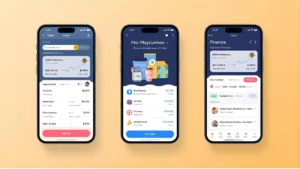The old American habit of financing purchases — from sofas to wedding dresses — is back, but with a digital twist. The “buy now, pay later” plan (or BNPL, for short) is transforming the way consumers finance their trips — and, like every financial trend, it comes with seductive promises and hidden risks.
More than half of Americans have used some form of BNPL, according to consulting firm PartnerCentric. Millennials and Gen Z are leading the way, driven by apps that make installment payments as easy as a click. The phenomenon has hit the travel industry hard: a 2024 Phocuswright survey showed that nearly 40% of companies in the sector already offer installment payment options. In NerdWallet’s 2025 summer report, nearly one in five respondents said they plan to use BNPL to pay for their next trip.
But a vacation isn’t a smartphone — and the risks of financing holidays the same way you finance a home appliance can be greater than they appear.
The charm of interest-free installments
On the surface, BNPL sounds like a traveler’s dream: book today, pay in small chunks, and with no interest. Companies like Affirm, Afterpay, and Klarna popularized the model, splitting the total amount into four equal payments, usually spread over six to eight weeks. For many, the appeal is clear — especially in times of inflation and tight credit.
And indeed, when everything goes as planned, BNPL can be a useful budgeting tool. The problem is that, in real life, things rarely go according to script.
According to a LendingTree study, more than 40% of BNPL users missed at least one payment in the past year. And when that happens, the “interest-free” magic disappears quickly.
The penalties vary: Afterpay charges at least $10 for late payments on purchases over $40, with a maximum of $68. Klarna imposes fees of up to $7, much lower than credit card interest rates — which can exceed 30% annually. Affirm doesn’t apply a formal late fee, but partial or late payments can harm credit scores and even restrict future access to the platform.
The model is paradoxical: it promises financial freedom but relies strictly on discipline. One slip, and your planned installments become debt — and debt is a travel companion that stays with you for a long time.
Credit cards: the old veterans still have the edge
Compared to BNPL, credit cards may seem old-fashioned. They require approval, charge annual fees, and if you don’t pay the full balance, the interest rates are high. But there’s one essential difference: protection.
Credit cards offer benefits that BNPL still can’t match. Travel insurance, flight delay reimbursements, car rental coverage, international medical assistance — perks that can turn a mishap into a mere inconvenience.
Even basic cards like the Chase Freedom Rise offer up to $1,500 per person in coverage for canceled trips. Premium cards — like the Amex Platinum — go further, offering lounge access, hotel credits, and benefits that, when used strategically, offset their high annual fees.
“When you travel using a credit card, you’re protected,” said Julie Beckham, vice president of Rockland Trust Bank, on a recent episode of the institution’s podcast. “Split anything into four payments, and it seems affordable. But life happens — people forget, fees pile up — and in the end, you have fewer options.”
Additionally, many credit cards reward spending with loyalty points that can be redeemed for flights, upgrades, or accommodations. Most BNPL plans, on the other hand, offer no rewards.
When ‘buy now, pay later’ becomes a disguised loan
Not all BNPL plans are created equal. The “traditional” versions split the amount into four interest-free payments. But platforms have been expanding the model to include longer-term financing — six months, a year, or even more — and that changes the picture.
These plans function like short-term personal loans, with interest rates ranging from 0% to 36%, depending on the user’s credit history. According to Ed deHaan, professor at the Stanford Graduate School of Business, these products can be even more expensive than credit cards.
“This is a moment for buyer caution,” says deHaan. “Most credit cards don’t accrue interest until after 30 days. These plans start charging on day one.”
The risk, he says, lies in the convenience. The promise of “instant approval” lures impulsive consumers — especially young ones. “It’s credit that doesn’t look like credit,” he says. “And that’s what makes it so dangerous.”
The travel industry’s attraction
Travel companies have recognized BNPL’s potential. Businesses like Flex Pay and Paylater Travel have specialized in turning installment plans into marketing tools.
Paylater Travel lets travelers book today for a future trip, paying the total before departure. The system is marketed as “pay while you save”: interest-free installments for up to 26 weeks, with an initial deposit of just 5%.
Flex Pay, meanwhile, partners with major brands like United Airlines, Carnival Cruise Line, Wyndham Hotels & Resorts, and Universal Destinations & Experiences. The model includes options with interest rates between 0% and 36%.
For example, a $1,000 trip financed over six months at 15% interest would cost about $1,044 — a small difference on paper, but significant if you stack several of these payments.
Some partners, like Vail Resorts, offer interest-free plans. The popular Epic Pass, which costs about $1,097, can be paid over nine months at $122 per month — with no added fees.
According to Tom Botts, president of Flex Pay, the goal is to democratize access:
“We’re opening the door, allowing more people to travel,” he said.
The problem is that easy access rarely comes without cost.
When the trip doesn’t happen
The key difference between financing a smartphone and a vacation is unpredictability. Cancellations, date changes, strikes, storms — anything can happen. And when it does, BNPL terms reveal their less-friendly side.
If a Paylater Travel customer cancels a flight, they pay a 10% cancellation fee, capped at $150 per person, in addition to airline fees. The company says nonpayment cases are “rare” and that it seeks “flexible solutions” such as travel credits or rescheduling.
But if the purchase was made through Flex Pay, the situation changes: even if the passenger receives airline credit, they must still pay off the full financing. If the ticket is refundable, the amount is returned to the loan, not the consumer.
“In travel, things can change overnight — and we understand that,” says Botts. “But the financial commitment remains the traveler’s responsibility.”
Comparing the options
| Feature | Traditional BNPL (Klarna, Afterpay) | Credit Card | Travel Financing (Flex Pay, Paylater) |
| Interest | 0% (short-term) | 0–30% (if not paid in full) | 0–36% |
| Terms | 6 to 8 weeks | Indefinite | 3 to 24 months |
| Traveler protection | None | Insurance and reimbursements | Limited |
| Rewards/Points | No | Yes | Rare |
| Credit impact | Possible if late | Yes, ongoing | Yes |
| Approval ease | High | Medium | High |
The temptation and the price of convenience
BNPL is the perfect product for our times: fast, simple, and invisible. In a world of notifications and clicks, it offers the illusion of financial control — and the promise of instant experiences.
But as Alexander Smith, professor of economics at Worcester Polytechnic Institute, warned, “these options exploit impulsivity, the preference for instant gratification, and consumption at the expense of long-term financial planning.”
The result is a predictable cycle: trips more expensive than the budget, installments that pile up, and the sense that financial freedom has slipped through one’s fingers.
“Buy now, pay later” can indeed open doors — for those who understand the math and the risk. For others, it may become the new invisible credit card: the one that promises freedom and delivers debt.
In the end, perhaps the better question isn’t “how much does the trip cost?” but “how much does the rush to board cost?”








